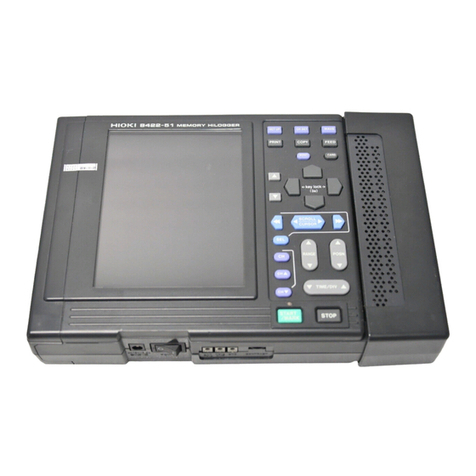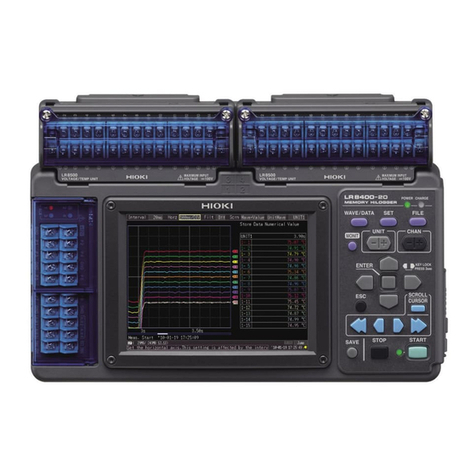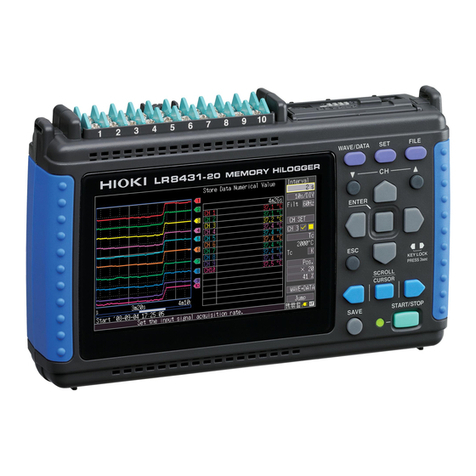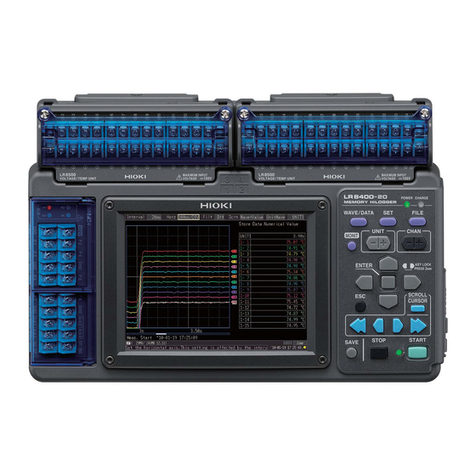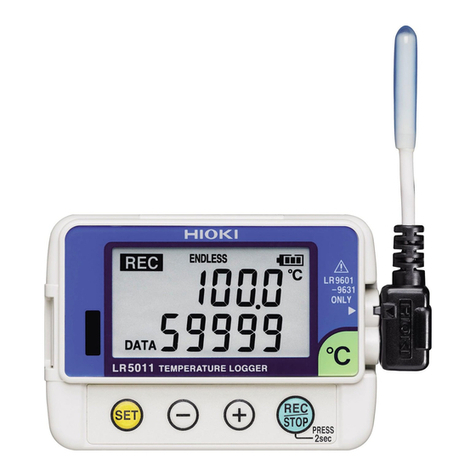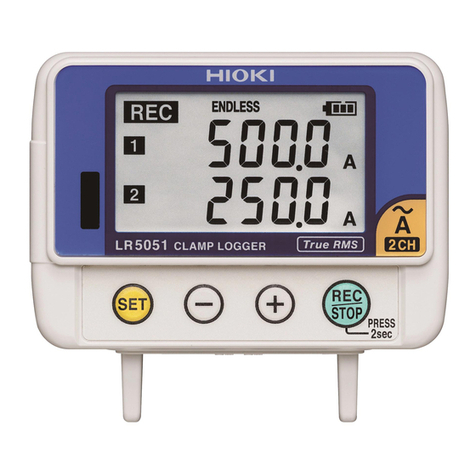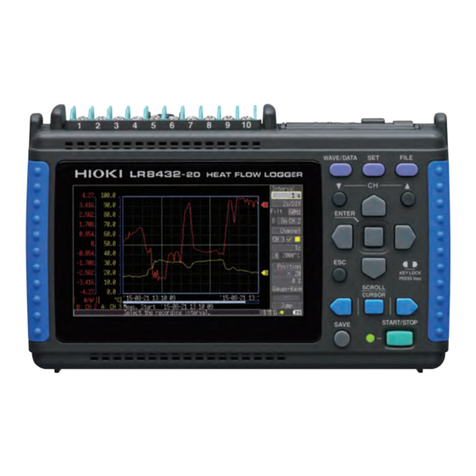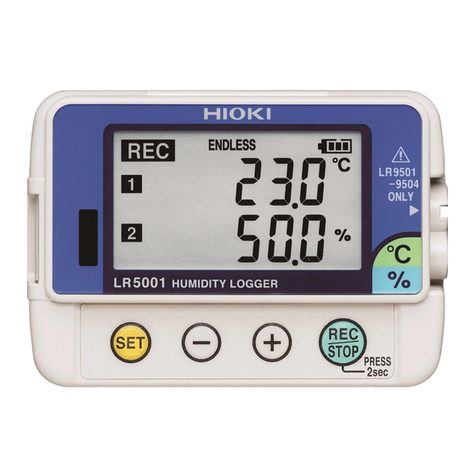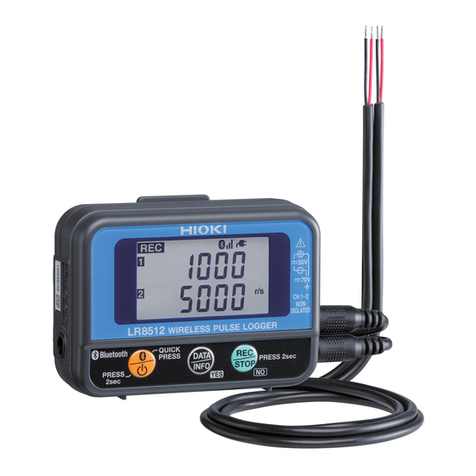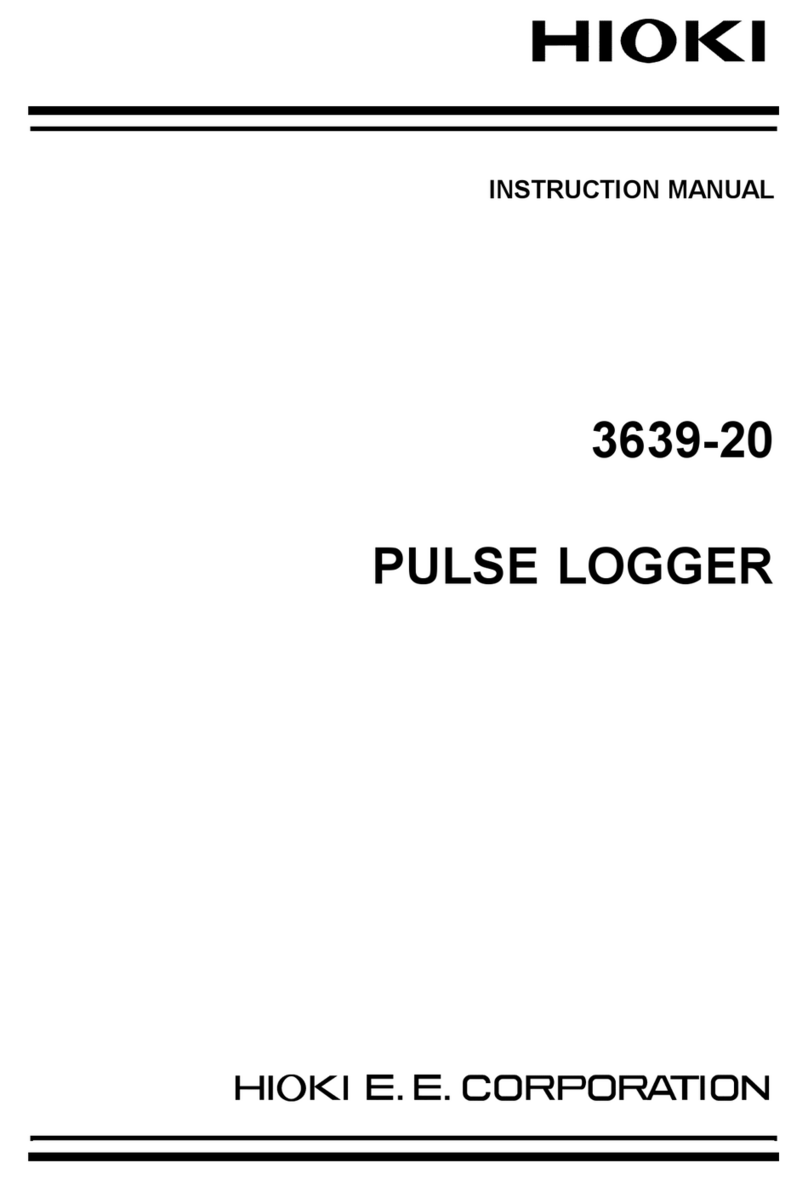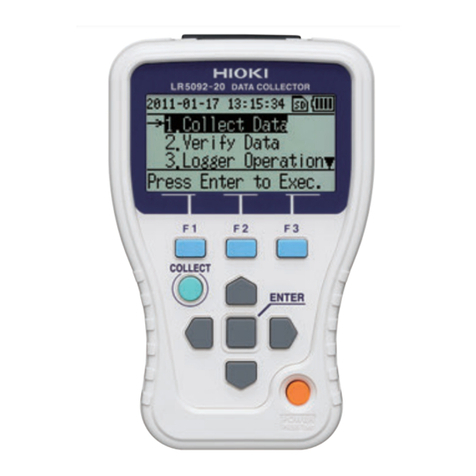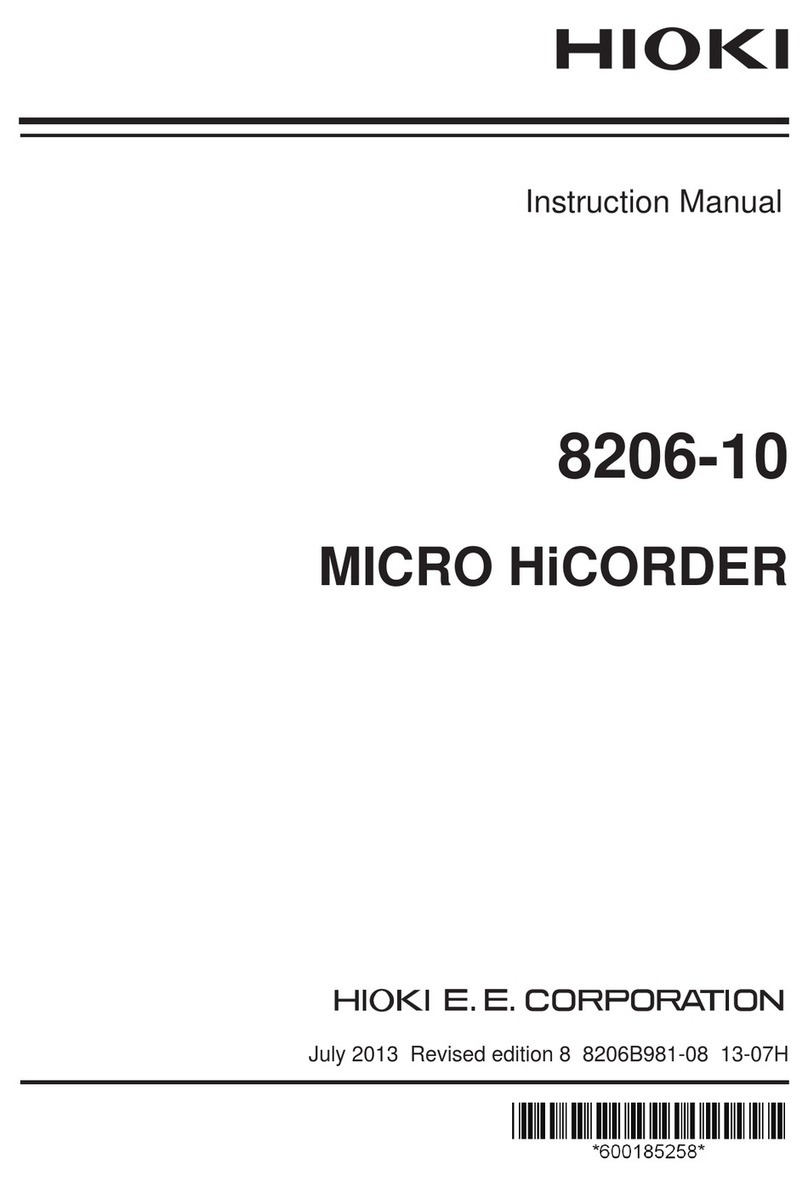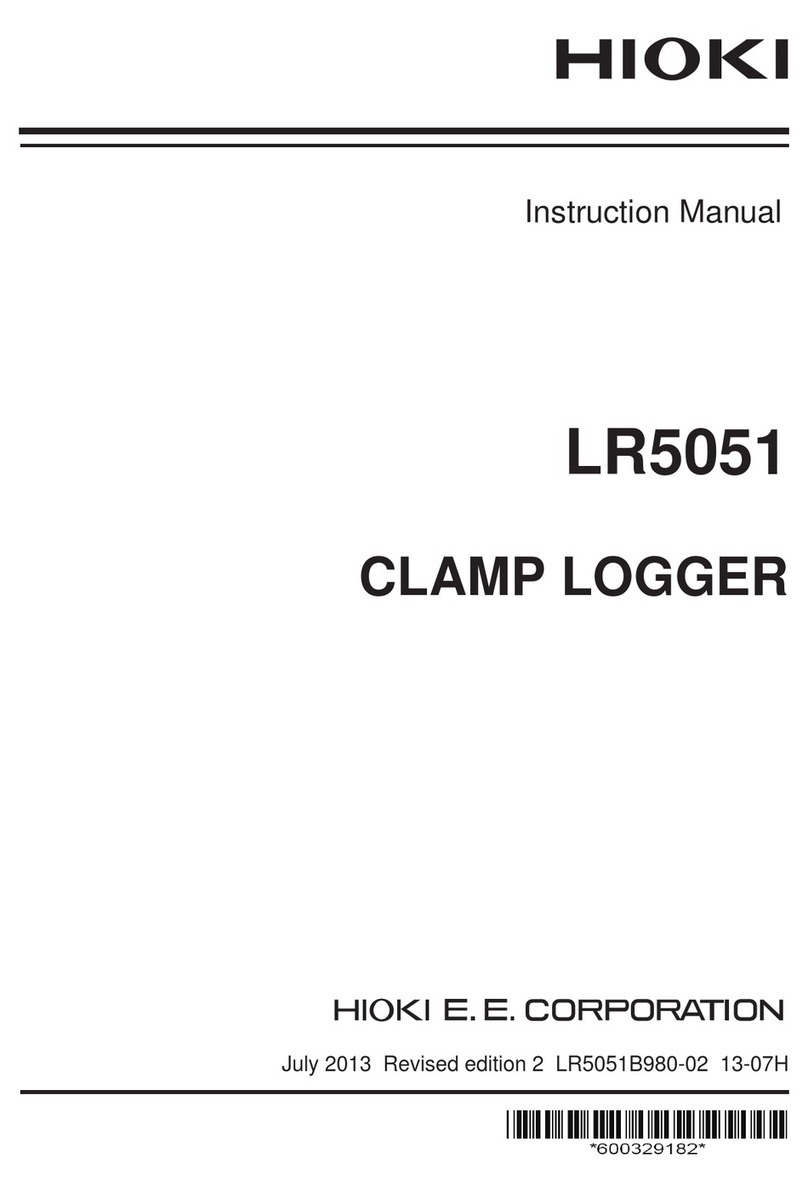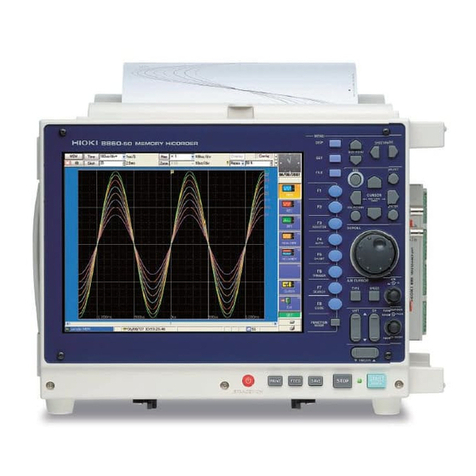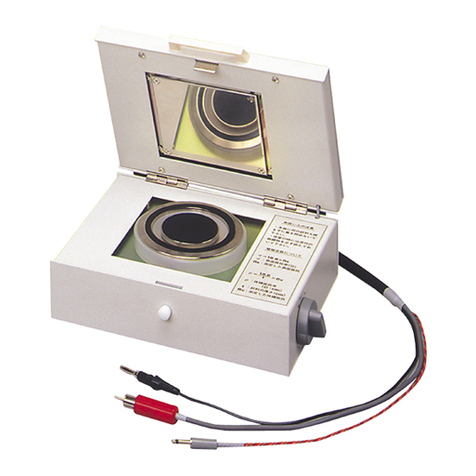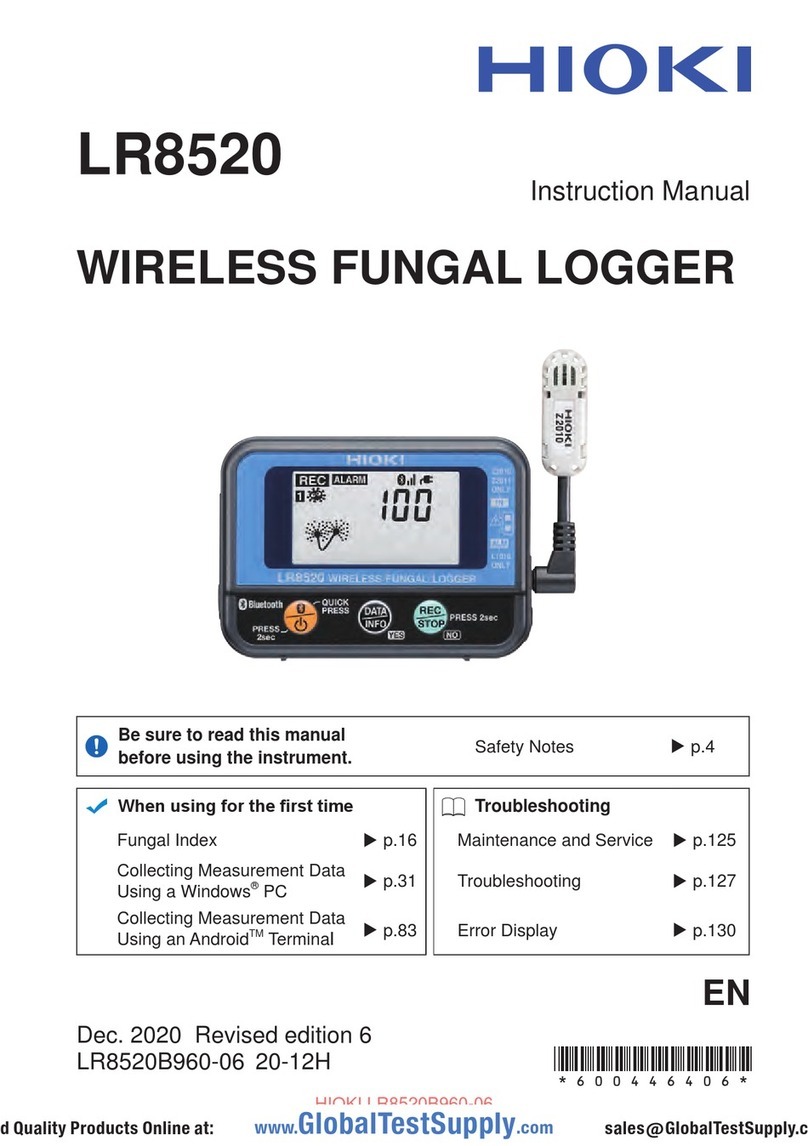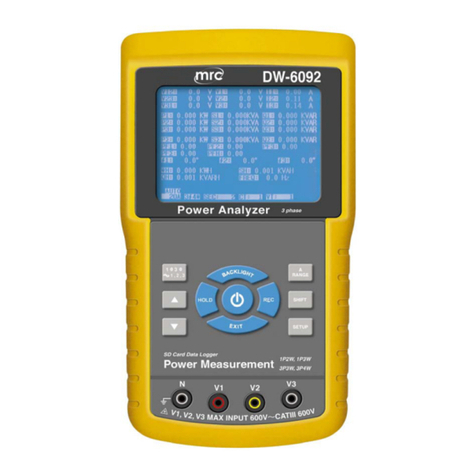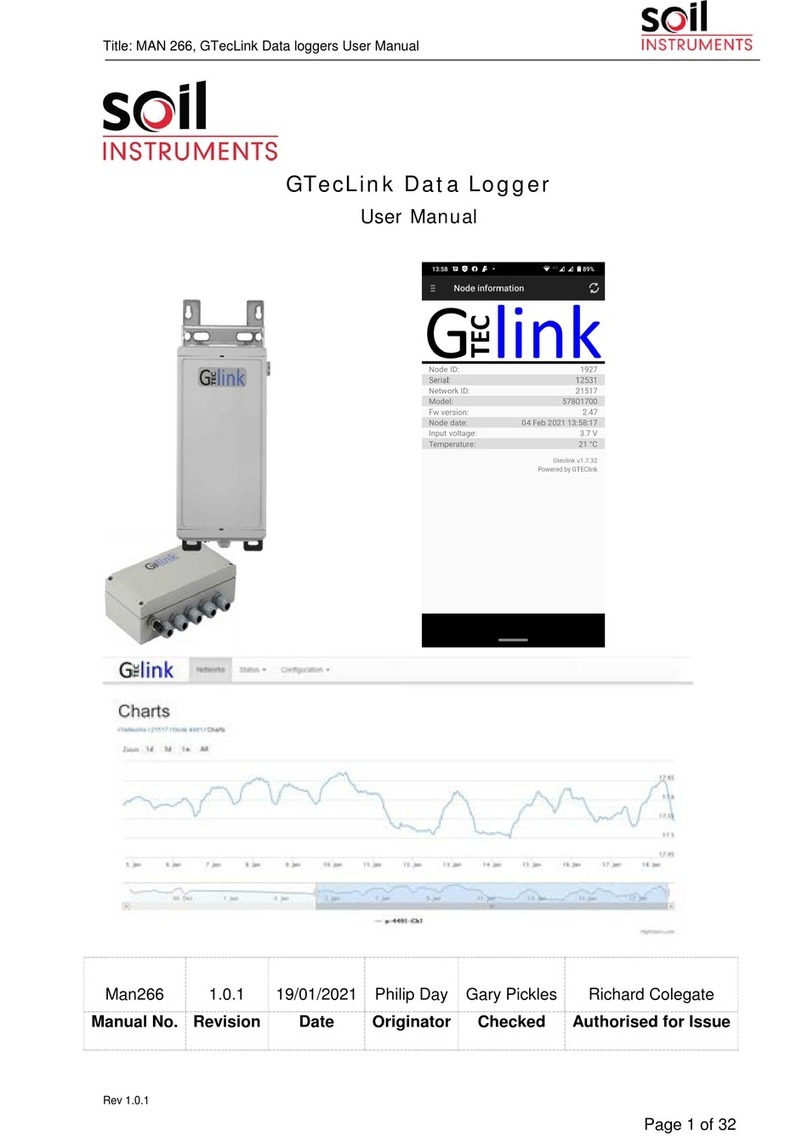
iv
_____________________________________________________________________
Safety Notes
______________________________________________________________
CAT I Secondary electrical circuits connected to an AC
electrical outlet through a transformer or similar
device.
CAT II Primary electrical circuits in equipment connected
to an AC electrical outlet by a power cord (portable
tools, household appliances, etc.)
CAT III Primary electrical circuits of heavy equipment
(fixed installations) connected directly to the
distribution panel, and feeders from the distribution
panel to outlets.
CAT IV The circuit from the service drop to the service
entrance, and to the power meter and primary
overcurrent protection device (distribution panel).
Measurement categories (Overvoltage categories)
To ensure safe operation of measurement product, IEC
61010 establishes safety standards for various electrical
environments, categorized as CAT I to CAT IV, and called
measurement categories. These are defined as follows.
Higher-numbered categories correspond to electrical
environments with greater momentary energy. So a
measurement device designed for CAT III environments can
endure greater momentary energy than a device designed for
CAT II. Using a measurement product in an environment
designated with a higher-numbered category than that for
which the product is rated could result in a severe accident,
and must be carefully avoided.
Never use a CAT I measuring product in CAT II, III, or IV
environments. The measurement categories comply with the
Overvoltage Categories of the IEC60664 Standards.

